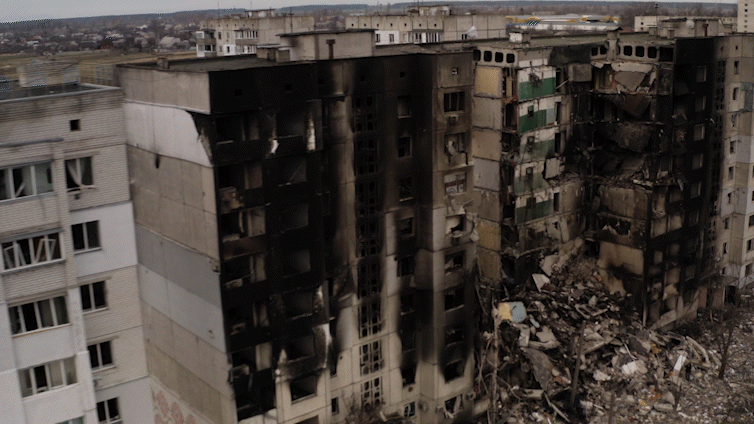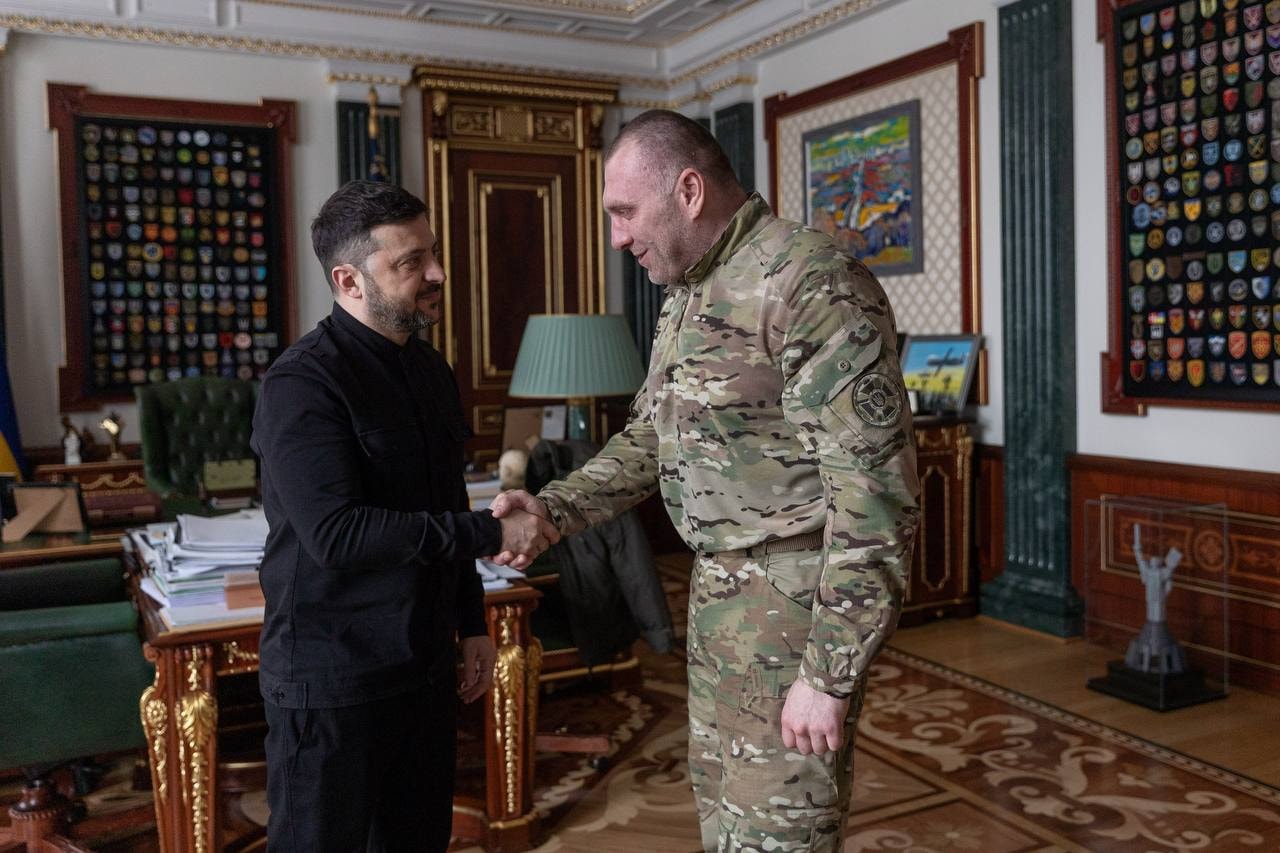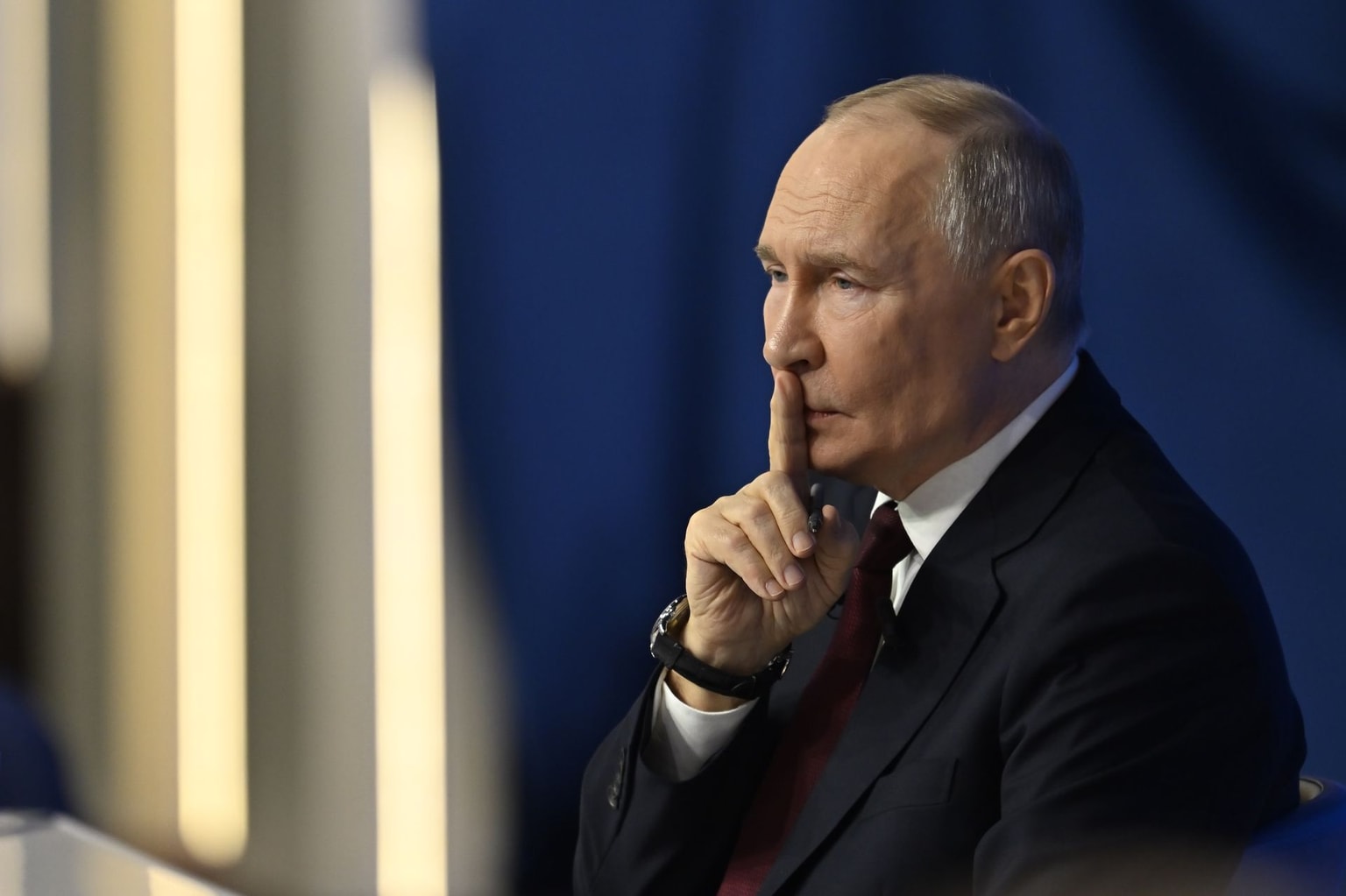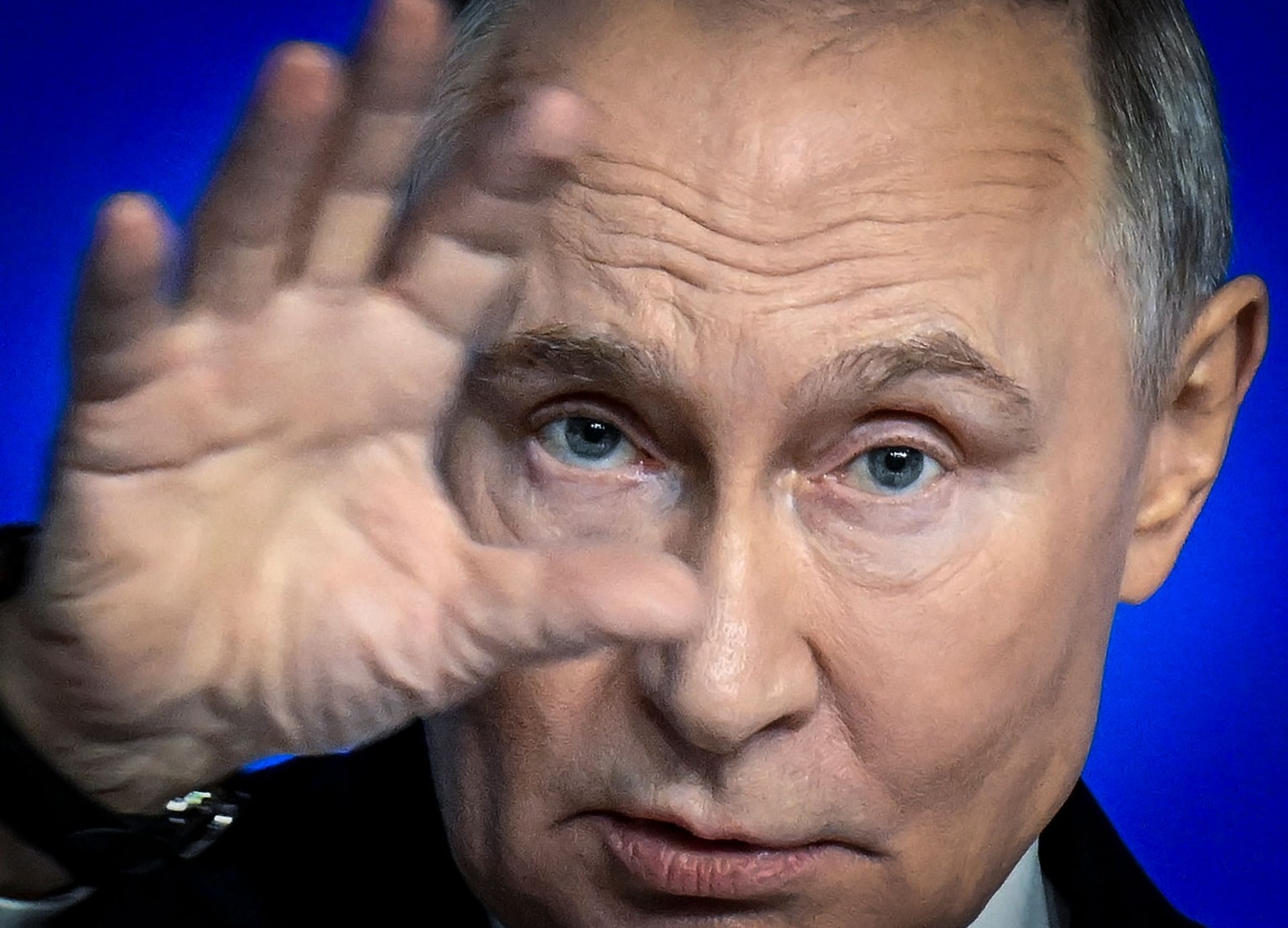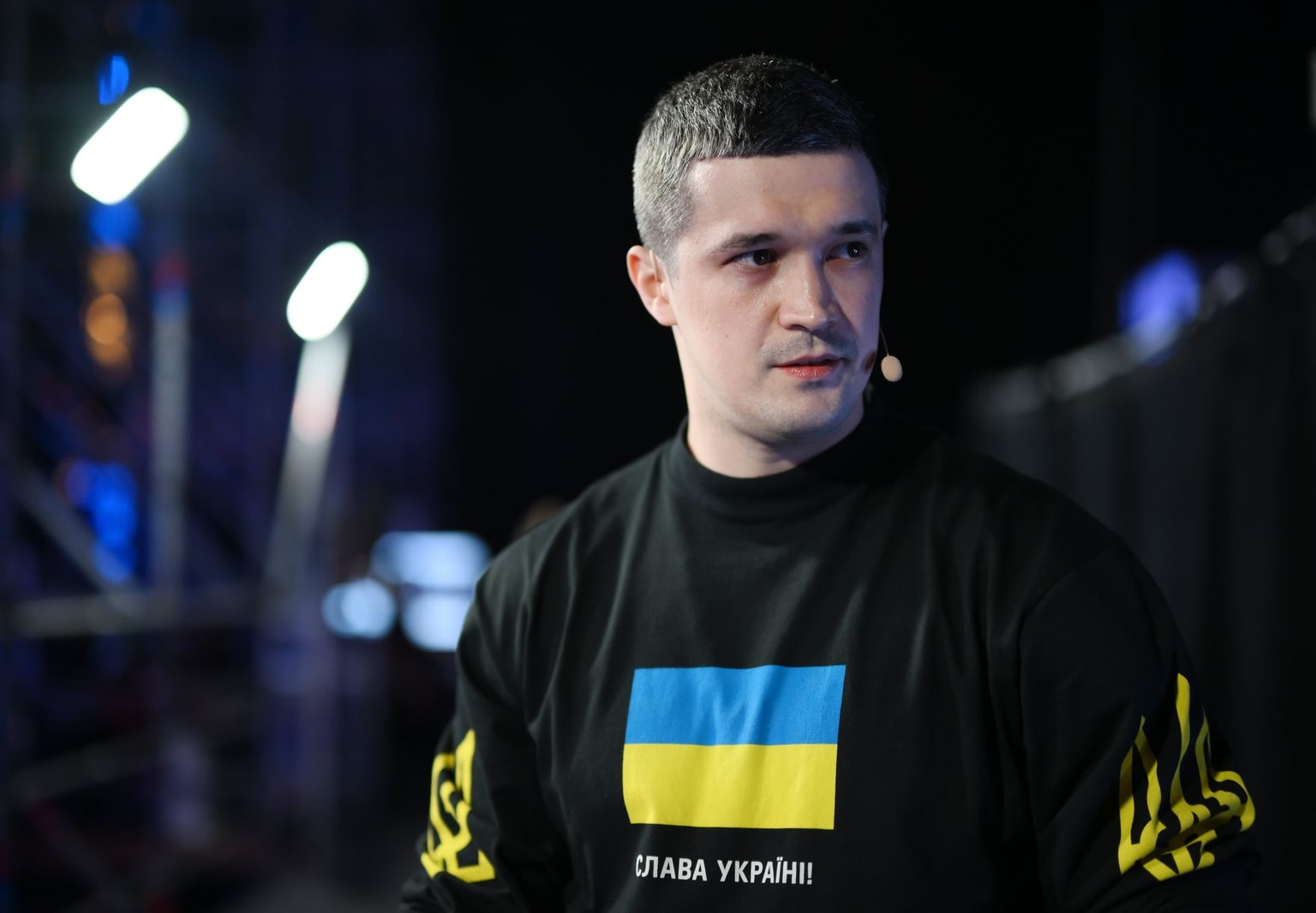
'Russia's tactic is obvious' — Shahed drone 'terror' now reaches all of Ukraine
By saturating skies from east to west, Moscow hopes to exhaust Ukraine’s interceptors and air defense teams.
State Emergency Service put out a fire after a mass drone and missile attack on July 4, 2025 in Kyiv, Ukraine. (Kostiantyn Liberov/Libkos/Getty Images)
As Russia intensifies its air strikes against Ukraine, its tactics have visibly shifted, with a growing number of missile and drone attacks now targeting western regions once considered relatively safe.
Overnight on July 9, cities across Ukraine came under the largest air assault yet, with the western city of Lutsk experiencing what local officials described as the heaviest bombardment to date.
Just a day later, on July 10, Russian drones struck Chernivtsi, another western city, where residents heard the sound of Shahed-type drones, known for their loud, buzzing engines, for the first time.
"It's truly terrifying. Your heart jumps out of your chest when you hear the sound of a Shahed drone, then gunfire, then an explosion," Anastasiia Yatsenko, a resident of Chernivtsi, told the Kyiv Independent.
"The fear just went through my whole body, everything felt numb, and my head was foggy," said Yeva, another resident. "I grabbed my baby as he was — naked, just in a diaper — and ran barefoot to the (underground) parking lot."
Experts believe that the recent wave of Russian strikes indicates a change in the Kremlin's strategy.
"They've never had a technical problem reaching western Ukraine, whether Lviv or any other region," Israel-based military analyst David Sharp told the Kyiv Independent.
"It has always been a question of priorities."
Russia's drone doctrine
Russia's widespread use of Shahed drones began in late 2022. Their cost and relatively easy production have made them central to Moscow's air assault strategy.
"Russia has bet on drones as a weapon to strike targets in Ukraine," Sharp said.
"The calculation is that they can inflict military damage while also dealing psychological blows. They've decided that mass drone attacks are worth it."
Between Sept. 13, 2022, and Aug. 30, 2023, Russian forces fired nearly 2,000 Shaheds into Ukraine, according to Airwars, a London-based conflict monitoring organization.
That number has surged in 2025 — in June alone, Moscow launched a record 5,337 Shahed-type drones.

Sharp noted that while Ukraine's air defenses are highly effective against cruise missiles, drones present a different kind of threat.
"Cruise missiles are expensive, and their numbers are limited — both financially and, apparently, due to production capacity," he said. "So when Russia gained the ability to produce a large number of drones, it seized the opportunity."
Attacks on western Ukraine
For much of the war, Shahed drones primarily targeted central and southern Ukraine, hitting cities like Odesa, Mykolaiv, Dnipro, and Kyiv. But in recent weeks, these attacks have expanded westward.
On July 9, Russia launched 728 Shahed-type drones and decoys across the country.
Volyn Oblast Governor Ivan Rudnytskyi said that nearly 50 drones and five missiles were in the airspace above the region overnight, with the majority aimed at regional capital Lutsk.
Lutsk Mayor Ihor Polishchuk said the attack damaged an "industrial site" as well as a garage, in what he called the "most massive Russian attack" on the city.

Serhii Bratchuk, spokesperson for the Ukrainian Army's Southern Division, said the escalation is part of a broader strategy by Russia to instill fear and undermine confidence.
"The tactic is to intensify people's sense of fear, to deepen the feeling that there is no safety and no confidence in the state or in the defense forces all around the country," he told the Kyiv Independent.
"This is pure terror, which means all regions are potentially under threat."
Bratchuk said Russia's tactic is to saturate air defense systems by overwhelming them with Shaheds and decoys — and to make sure no part of Ukraine feels safe.
"Russia's tactic is obvious," he said. "They pick a town — usually large or mid-sized — and then relentlessly terrorize it to the maximum extent."
"Unlike before, when these attacks happened mostly at night, now they can strike throughout the day. This is pure terror — deliberate terror against the entire country."
Stretching Ukraine's defenses
Beyond terrorizing civilians, the drone campaign is designed to erode Ukraine's military capacity, Sharp noted.
"They shouldn't be denied their intent to achieve military goals," he said. "One key objective for Russia is to stretch Ukraine's resources by forcing them to intercept Shahed drones and cruise missiles."
He explained that many air defense units are stuck protecting cities in the rear, rather than being deployed near the front line, where they could pose more direct threats to Russian troops.

"If it weren't for this need, those soldiers and commanders from these fire teams could focus on other crucial tasks on or near the front line," he said.
Sharp also noted that Western military aid packages are allocated in financial terms, meaning resources used for air defense could have otherwise been directed to other needs.
"If Ukraine didn't have to intercept Shaheds near Lutsk, that funding might have been used for HIMARS missiles or other weapons."
What comes next?
Both Bratchuk and Sharp warned that Russia is unlikely to scale back its drone production. Instead, they expect an increase in attacks using both Shaheds and decoy drones designed to drain Ukraine's air defense systems and rattle the population.
President Volodymyr Zelensky said on July 10 that Russia intends to drastically escalate its drone attacks, potentially launching up to 1,000 drones per day.
"They're not standing still," Sharp said. "They use cheap decoy drones that drain resources and fray nerves — both among civilians and the military."
Bratchuk noted the need for advanced weaponry to enhance Ukraine's mobile fire teams in intercepting Russian air assaults.
"They need better weapons — heavy machine guns, man-portable air defense systems, and possibly light combat aircraft capable of shooting down drones."
He also highlighted the importance of developing interceptor drones to counter the threat. Ultimately, however, Bratchuk said that the solution must come from striking at the source of the drone threat itself.
"The ideal option is to eliminate the source of all this trouble," Bratchuk said, expressing hope that Ukraine's partners would provide the necessary weapons.
"We can't handle this alone right now."
Anna Fratsyvir contributed to reporting.
Note from the author:
As Russia persists in terrorizing Ukraine with widespread missile and drone strikes, we need your support to keep reporting.
The Kyiv Independent operates without a wealthy owner or a paywall, relying solely on readers like you to fund our journalism.
If you found this article interesting, please consider joining our community today.


